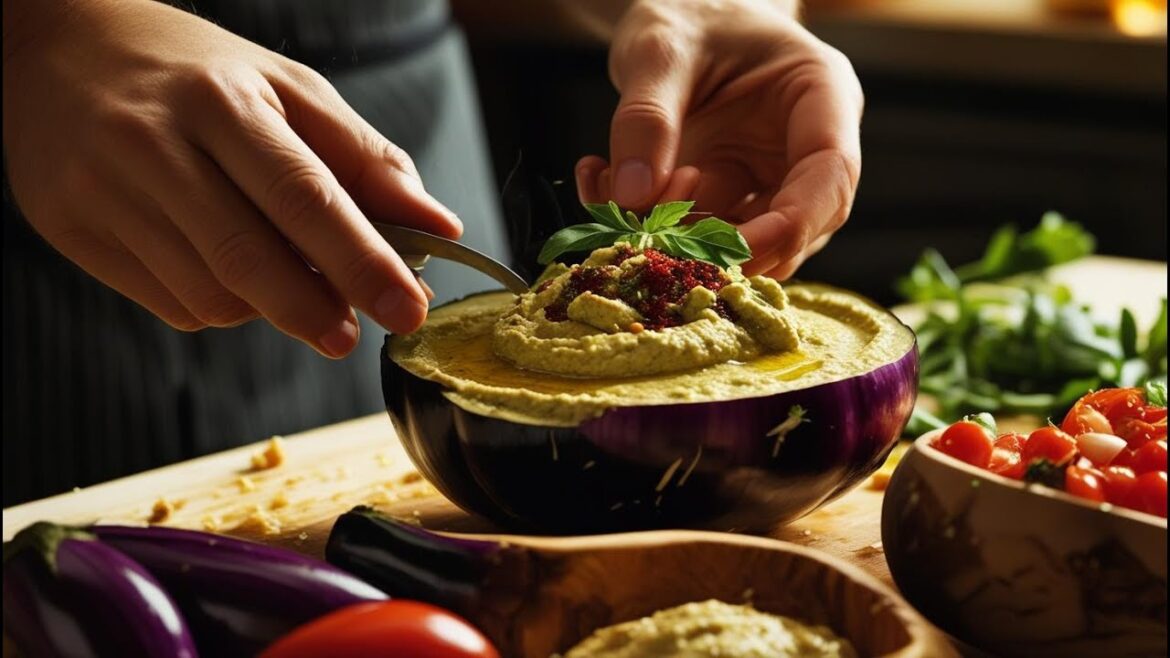How to Make Traditional Baba Ganoush – Authentic Eggplant Dip Recipe
Learn how to make traditional baba ganoush with this authentic eggplant dip recipe that brings out the smoky, rich flavors of the Middle East. Perfect as a healthy appetizer or a flavorful spread, this guide walks you through every step—from roasting the eggplant to blending the perfect mix of tahini, lemon, and garlic. Elevate your home cooking with this classic Mediterranean dish.
#BabaGanoush #EggplantDip #middleeasternfood
See more:
Albanian Cuisine: Where Fresh Ingredients Meet Centuries of Culinary Tradition
A swirl of smoky richness, a hint of garlic, and the velvety smoothness of roasted eggplant, one bite of traditional baba ganoush, and you’re instantly transported to the heart of the Levant. This celebrated Middle Eastern dish is more than just a dip. It’s a centuries old culinary legacy that speaks to the simplicity and elegance of regional cuisine at its core. Baba Ganesh is a testament to how minimal ingredients when treated with respect and care can yield unforgettable flavor. The soul of the dish lies in the eggplant. When roasted over an open flame or baked until its skin is charred and blistered, eggplant develops a deep smoky essence that defines this dish. The resulting flesh is tender and sweet, ready to be transformed into something sublime. To o craft an authentic baba ganesha, quality matters. Start with firm, glossy eggplants. Once roasted and cooled, peel off the skin and discard the seeds if overly bitter. The next essential ingredient is tahini, a creamy sesame paste that lends richness and balance. Combined with fresh garlic, lemon juice, olive oil, and a touch of salt, these elements create a harmonious blend that is earthy, zesty, and smooth. Unlike hummus, which can be dense, and uniform, baba ganoush should be light and slightly textured. Some variations include a sprinkle of cumin, a dash of smoked paprika, or even pomegranate molasses for a touch of sweetness. But the most authentic versions rely on restraint, allowing the roasted eggplant to shine through with every bite. Presentation also matters. Serve it in a shallow bowl drizzled with olive oil and perhaps garnished with parsley, chopped tomatoes, or a few pomegranate seeds. Warm pa, flatbread or fresh vegetables make excellent companions for scooping up this dip, enhancing its rustic charm. Making baba ganesh at home is not just about following a recipe. It’s about embracing a tradition. It’s slow food at its finest where roasting, mashing, and tasting come together in a rhythm that invites you to connect with every step. In a world of fast and processed foods, Baba Ganesh stands out as a reminder of how authentic flavors and mindful preparation can nourish both body and soul. Have you tried making Baba Ganesh at home? What’s your favorite twist on this traditional recipe? [Music]

